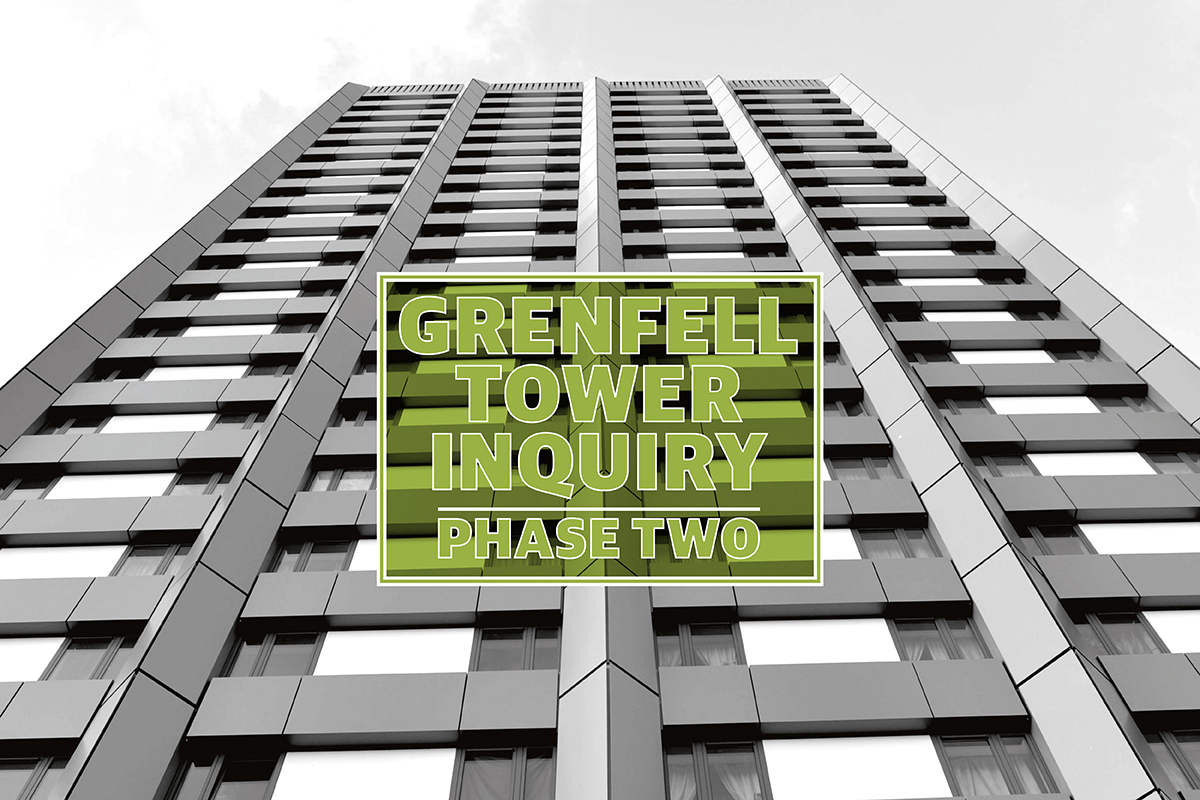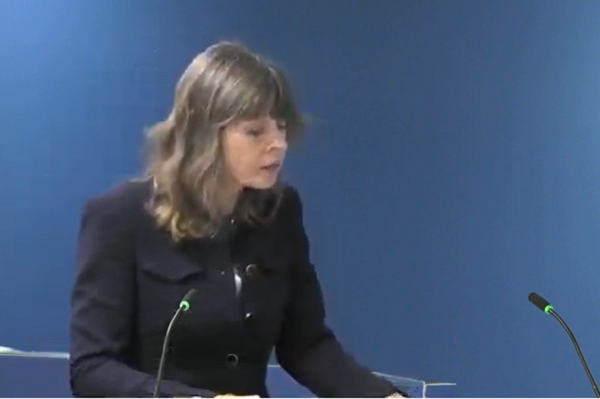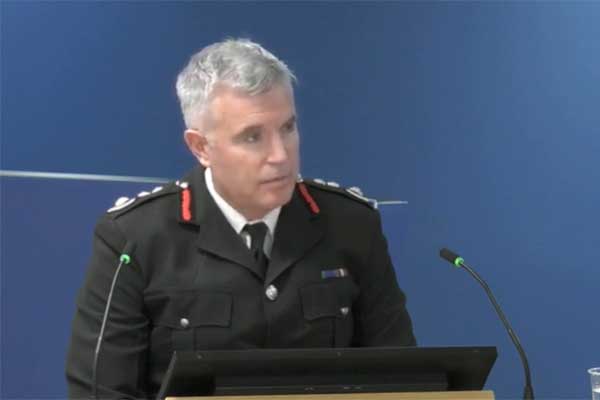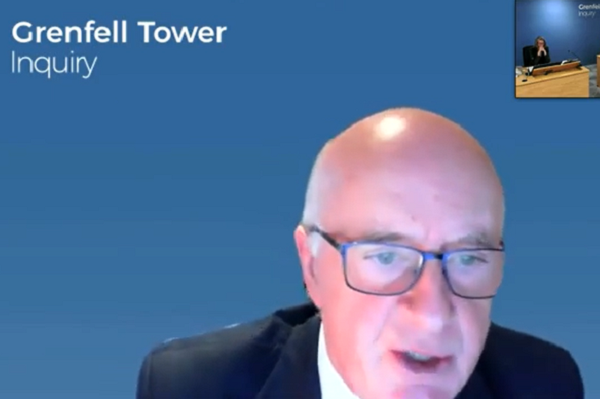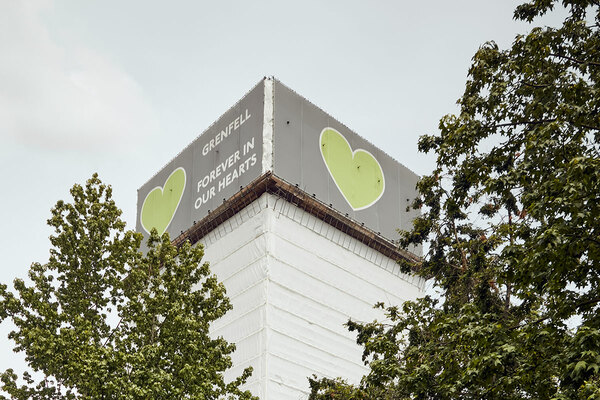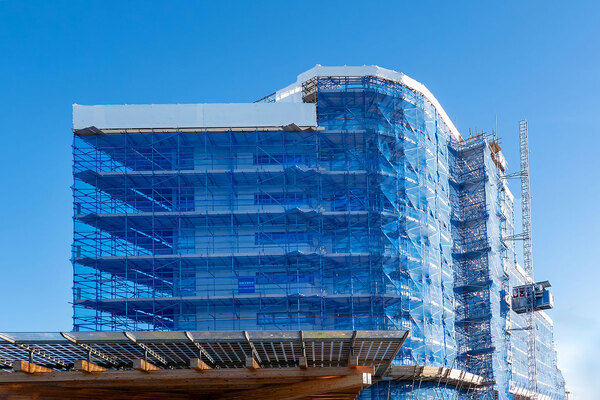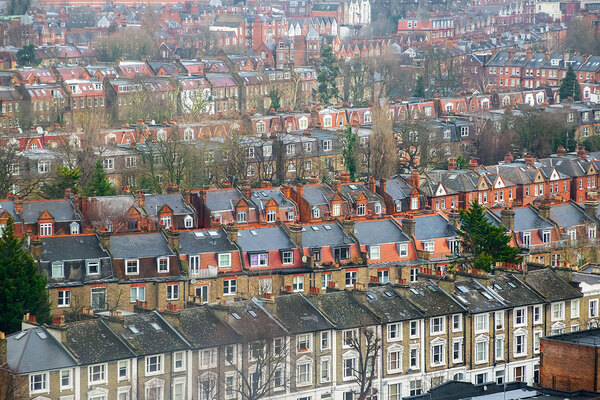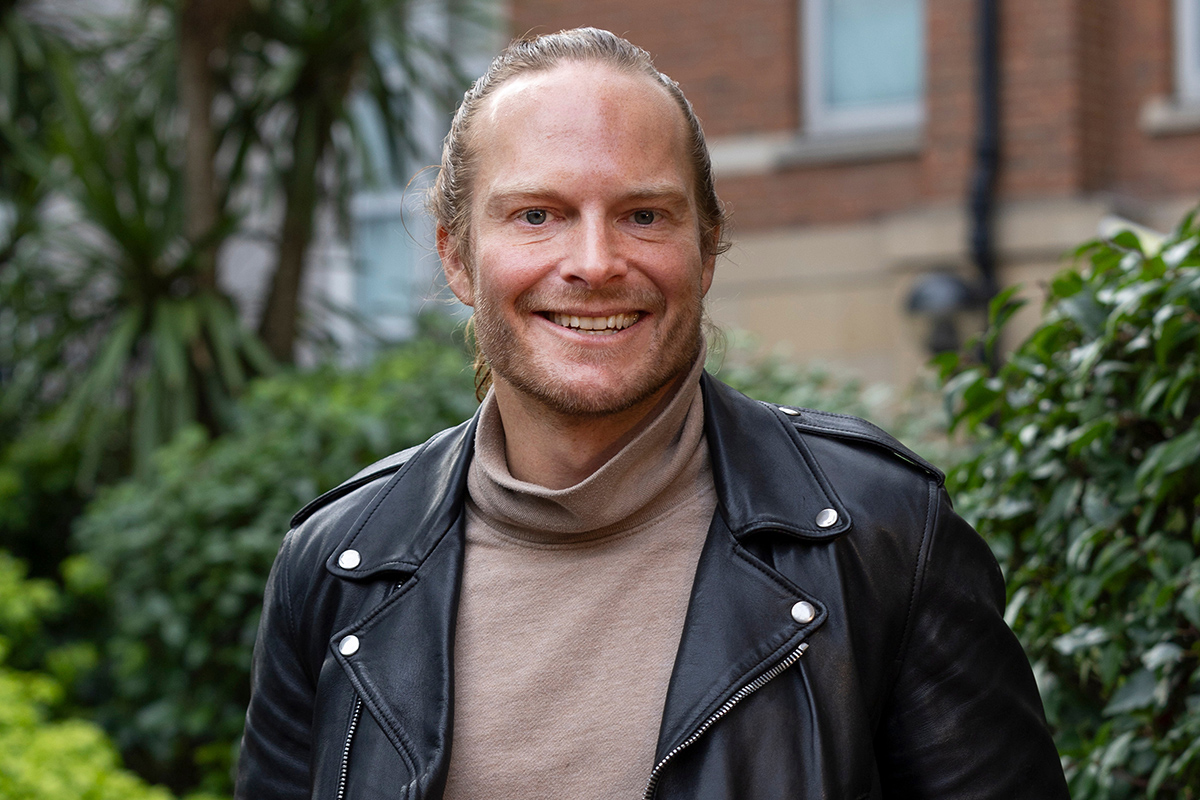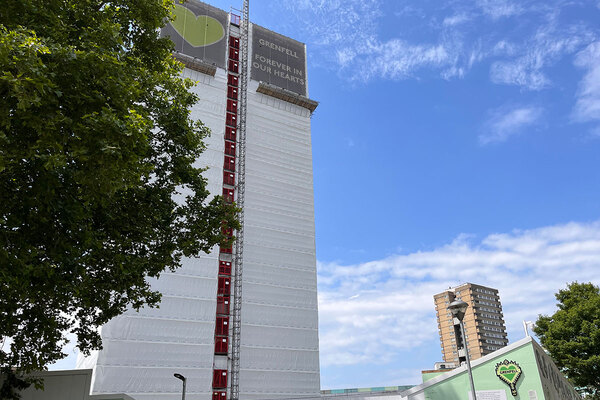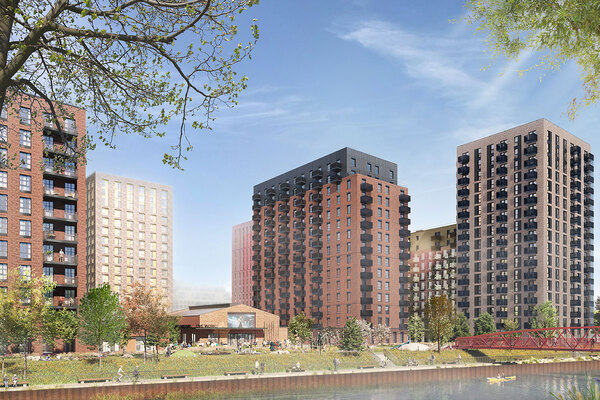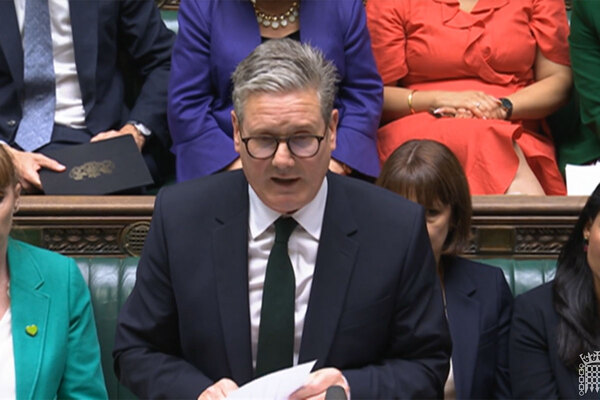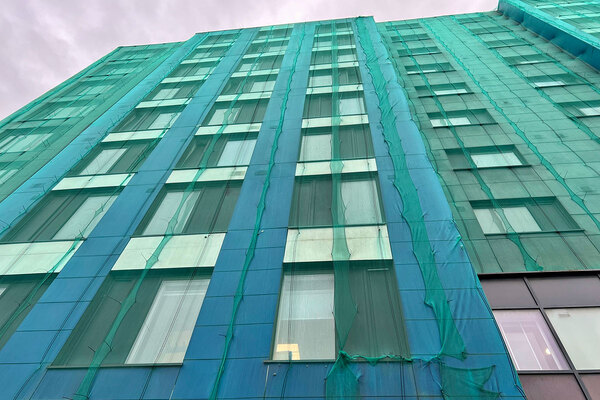‘One of the major scandals of our time’: key revelations as the Grenfell Tower Inquiry turns to government
The government was accused of “covering up” the risks of dangerous cladding as its “unbridled passion for deregulation” left it a “junior party” to the construction industry as the latest phase of the public inquiry opened today. Peter Apps summarises some of the main points
The failure to act after Lakanal
One of the key questions facing the inquiry is why the government did not act more robustly after the Lakanal House fire killed six people in July 2009, having spread via combustible external panels.
Today, Stephanie Barwise QC claimed that responding to Lakanal conflicted with the coalition government’s “true priority” of deregulating the building industry.
She called the government’s initial report into the fire “a complete whitewash”. She said this report, prepared by Sir Ken Knight, then chief fire and rescue advisor, focused on internal breaches – not the spread of the fire over combustible panels on the building’s walls.
She said he would later learn that the panels were well below legal standards but the government moved to stop this information being made public, noting the need to “avoid giving the impression that we believe all buildings of this construction [are] inherently unsafe”.
She said the government then shut down the inquiry prematurely in a “grotesque abdication of responsibility”, which “raises the spectre of a deliberate cover-up”.
Ms Barwise added that “nothing meaningful was done” in response to the coroner’s ultimate recommendations in 2013 – which included encouragement to retrofit sprinklers and a review of building guidance Approved Document B “with particular regard” to external fire spread.
She said that her clients “reject the implicit submission that the missed opportunity was accidental”.
“The department’s suppression of the critical information as to the nature of the cladding removes the possibility of accident,” she said.
On sprinklers, the government simply referred to a letter it had sent to housing providers following another inquest into a fire in Hampshire. Civil servants were said to have referred to this as being used “to be able to say that DCLG [the Department for Communities and Local Government] is taking action”.
Internally, however, the department planned for “a defensive line” against the implementation of sprinklers.
The review of Approved Document B was simply rolled into a broader review of documents, which Ms Barwise said amounted to “no more than a deregulatory cull of provisions”, and had not been completed by the time of the Grenfell Tower fire.
This was despite a senior civil servant writing in September 2015 that the document was “in urgent need of comprehensive review”.
The government was put under pressure to act, particularly by an all-party parliamentary group chaired by the late Sir David Amess.
The exchange of letters between this group and the government, previously obtained by Inside Housing, was cited at length by Michael Mansfield QC for another group of bereaved and survivors.
He produced a new document showing that Brian Martin, a senior civil servant responsible for Approved Document B, recommended to a minister that he should not meet with the group, noting that speeding up the review would “require the allocation of resources”.
In May 2017 – just a month before the Grenfell Tower fire – one civil servant was said to have written: “We or ministers are increasingly vulnerable to some or all of these risks becoming material and [government] being held to account for being inactive.”
Mr Mansfield also revealed that Melanie Dawes, then permanent secretary at DCLG, said that the day of the Grenfell fire was the first time she had heard of Lakanal. “She’s telling the truth. She didn’t know. Why? Because Lakanal did not matter,” said Mr Mansfield. “All the recommendations, even the deaths had not spurred them into action.”
Deregulation
The context for this failure to act over the Lakanal House recommendations was said to be the government’s intense focus on deregulation, particularly in relation to housebuilding as it sought to drive increases in the number of new homes being built.
Amid a drive to reduce regulation with a “one in, two out” rule and a “red tape challenge”, Mr Mansfield referred to David Cameron’s stated aim to “kill health and safety culture” in a January 2012 speech.
As part of the March 2011 Budget, amid what Ms Barwise called a “radical housing agenda”, a special waiver had to be obtained to make any changes to the building regulations.
When considering the introduction of this rule, the government was said to have acknowledged that it breached the state’s duty to protect the right to life, which Ms Barwise called “chilling”.
A Housing Standards Review in 2012 was said to be described by a senior civil servant as “an example of regulation to deregulate” and by then prime minister David Cameron as a “bonfire of the building regulations”.
Oliver Letwin, who was influential in the red tape challenge, was quoted by Mr Mansfield as saying that “a call to minimise risk is the call of a cowardly society”. In a twist of fate, his group would meet on the day of the fire in order to discuss further removing building regulations.
Also on the day of the Grenfell Tower fire, a senior civil servant is said to have written: “Some of the stuff about disproportionate burdens feels uncomfortable today.”
Class 0
The fire classification of ‘Class 0’ holds a great deal of significance for the Grenfell Tower story. Originally introduced into guidance in 1952, it primarily assesses the spread of flame over the surface of a material.
But this is flawed – because a material with a combustible core and a non-combustible surface (such as sandwich board containing insulation or the polyethylene-cored cladding used on the tower) can obtain it.
We heard today that the government missed multiple opportunities from 1991 onwards to remove this standard from the guidance, or replace it with tougher ‘Euroclass’ standards that were being adopted throughout the EU.
Ms Barwise said this failure was “cynical” and motivated by a desire to protect the insulation industry. Foil-faced insulation products can sometimes obtain ‘Class 0’ and research in the early 2000s suggested that the European standards would “discriminate against” these products.
Insulation manufacturer Kingspan was said to have written in 2003 that the “government has stated that it will not implement the new Euroclass system until the industry is ready to adopt it”.
Ms Barwise also said cladding industry body the Centre for Window and Cladding Technology (CWCT) warned that replacing Class 0 with mandatory requirements for large-scale testing would effectively result in rainscreen cladding systems being banned. This, the body said, would have “economic consequences for the building industry and the UK as a whole”.
The cladding used on Grenfell had a certificate saying it “may be regarded as Class 0” although it had never in fact passed the test.
Ms Barwise and other lawyers argue that the Class 0 standard was not an excuse for using it, because of a separate statutory responsibility that external walls should “adequately resist” the spread of flame.
Knowsley Heights and Garnock Court
Two building fires in the 1990s have always seemed significant in the Grenfell Tower story and today both were described as government “cover-ups”.
Knowsley Heights – as Inside Housing has previously written – was a pilot for government-funded cladding projects. It used combustible glass reinforced plastic (GRP) cladding panels, and suffered a serious fire in 1991.
But the report into the fire prepared by the Building Research Establishment (BRE) was kept for “limited circulation”, with a handwritten note suggesting that the government intended to “play down the issue of the fire”. The Class 0 standards for cladding panels were not toughened as a result.
Ms Barwise said this was “consistent with government legitimising the flammability of the cladding, rather than solving the safety problem it posed”.
A further report by the BRE in 1994 revealed that fire could spread through the cavity in a cladding system, and cavity barriers were ineffective to stop this. This too was kept quiet, with a prohibition placed on it preventing it being cited in other documents.
“The consistent pattern of inadequate investigation and suppression of reports… goes beyond mere accident, and involves government collusion,” Ms Barwise said.
Garnock Court, which caught fire in 1999, also used combustible GRP panels. But the report into the fire, again prepared by the BRE, did not contain any reference to the Class 0 standard or whether the panels met it.
Ms Barwise said this report was “entirely neutered”.
“It is not clear whether BRE felt constrained by central or local government to suppress the fact that the cladding was non-compliant with regulations. Perhaps it felt constrained by both, given central government paid for the Ayrshire report,” she said.
The government was said to have asked the BRE to calculate the cost of fixing combustible cladding, and the BRE put it at £500m. Today’s estimate is in excess of £15bn.
The cladding tests
After the Garnock Court fire, the government worked with the BRE to create a new large-scale cladding test as an alternative route to compliance with the regulations.
As part of the work to design this test, the government carried out a series of tests on cladding systems – which were recently leaked to the BBC and have also been obtained by Inside Housing.
One of these systems – as suspected and confirmed today – contained the exact aluminium composite material (ACM) cladding later used on Grenfell Tower. This system failed atrociously – the test is supposed to run for 30 minutes but was abandoned after five minutes and 45 seconds.
Ms Barwise said it “beggars belief” that this ACM cladding was not specifically prohibited following these tests.
Brian Martin
Special attention was reserved for one civil servant: Brian Martin. Mr Martin previously worked at the BRE, before joining the government. At the time of the Grenfell Tower fire, he had been in charge of fire safety guidance Approved Document B for 20 years.
Ms Barwise said he referred to the document as “almost like my third child” and was reluctant to change it or acknowledge its flaws.
“His perceived superior knowledge of ADB and fire safety rendered him untouchable, and his behaviour and that of his department with him, became puerile and callous,” said Ms Barwise – although she did not expand on what this entailed.
“The key figure within government was Brian Martin,” said Adrian Williamson QC, for another group of survivors. “He had long been aware of the risks of employing the type of material used of Grenfell. These dangers were not disputed, but nothing was done. Instead, Martin took an attitude that was complacent and collusive with a dangerously out-of-control industry.”
Mr Martin was said to have been specifically warned in 2008 that certain composite products posed a risk to the public. But he simply responded by saying: “If you're concerned that a manufacturer is deliberately misleading people with its literature, then that's something that should be taken up with the relevant trading standards authority.”
In 2013, when the issue of downward fire spread at Lakanal House was raised with him by another civil servant, he dismissed it as “bird netting or some other crap falling out of the window”.
As Inside Housing has previously revealed, Mr Martin attended a meeting with the CWCT in July 2014 when he was warned of the dangers of ACM cladding and that combustible insulation was being widely used on high-rise buildings.
As the inquiry has previously seen, he shared a friendly warning with the National House Building Council (NHBC) on the same day as the meeting. In response to this, the NHBC explained in detail that combustible Kingspan K15 insulation was regularly being specified for high rises. He did not act.
He was also told that Approved Document B was “ambiguous” and did not clearly ban the use of dangerous ACM cladding. He was advised to publish an FAQ to make this clear. But he did not, and later told a delegate at a conference that he was “not sure the text is all that ambiguous”.
In 2015, he was told to produce a “worry list” in relation to Approved Document B. This was said to have noted that the government’s position on sprinklers was becoming increasingly hard to defend but omitted cladding as a concern.
Mr Martin has retained his position since the Grenfell Tower fire and was recently promoted.
BRE
A former government testing house, before being privatised in 1997, the BRE was referenced in several opening statements. Referring to its work investigating fires and running tests on cladding systems, Ms Barwise said: “BRE is a wholly flawed organisation which has effectively sponsored [insulation manufacturer] Kingspan’s activities for over a decade without raising the alarm, and has presided over a series of inadequate and dangerously misleading fire investigations.”
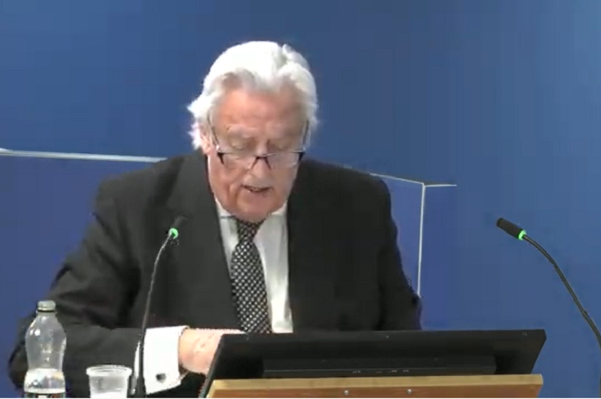
Mr Williamson also took on the BRE, saying that its customers are “the manufacturers who have used and abused the testing and certification system to push dangerous products into an ignorant and complacent marketplace”.
“And the BRE have colluded in this process,” he added.
He revealed that when cladding industry group the CWCT approached the BRE in 2014 suggesting collaboration over new cladding standards, former BRE director Debbie Smith wrote internally: “Woah! This looks very dangerous. We need to discuss our strategy to ensure we don’t end up handing the fire safety mantle to CWCT (a competitor).”
NHBC and LABC
Two other bodies received regular mention in the statements. First the NHBC, a private building control body and warranty provider that helps set standards in the housebuilding industry.
As the inquiry has previously seen, the NHBC raised concerns with Kingspan about the use of its combustible insulation on high rises in 2014, threatening to start rejecting its use. But it backed off in 2015 after Kingspan threatened it with legal action.
Ms Barwise said the NHBC was then “leant on” by Kingspan to help produce a controversial guidance note that legitimised the use of ‘desktop studies’ – a process of approving untested cladding combinations for use.
She called this a “circumvention” of the rules that was “necessary in order to protect NHBC which, as an approved inspector, had approved so many developments using K15”.
Mr Williamson said the body was “at best gullible and at worst collusive when dealing with the manufacturers” and said it was “Kingspan who are at the heart of this darkness”.
The organisation would publish a guidance note in 2016 that legitimised the use of combustible insulation and ACM – the combination that proved deadly at Grenfell.
The other body was the Local Authority Building Control (LABC), which produced controversial certificates for both Kingspan and Celotex (which provided most of the insulation for Grenfell Tower).
Ms Barwise described the organisation as a “spineless members’ organisation”. Mr Williamson pointed to emails which showed that after an initial meeting with Kingspan when certifying their products had been discussed, a senior staff member wrote “fanbloodytastic” and another wrote “we’ll save this failing company yet”.
The inquiry will begin hearing from LABC witnesses on Wednesday.
Social housing
In the years before the Grenfell Tower fire, the government cut the funding available to councils and other social housing providers, ditched consumer regulation and ordered them to focus on “value for money”.
After the fire, Helen MacNamara, the director general for housing at what was then called the Ministry of Housing, Communities and Local Government, wrote: “We… knowingly devolved responsibilities to councils and cut funding so can’t argue that we expected the regulatory function to continue.”
When she heard that the Royal Borough of Kensington and Chelsea had selected the lowest-priced contractor, she wrote: “How much did we incentivise that?”
The inquiry continues.
Sign up for our weekly Grenfell Inquiry newsletter
Each week we send out a newsletter rounding up the key news from the Grenfell Inquiry, along with the headlines from the week
Already have an account? Click here to manage your newsletters
